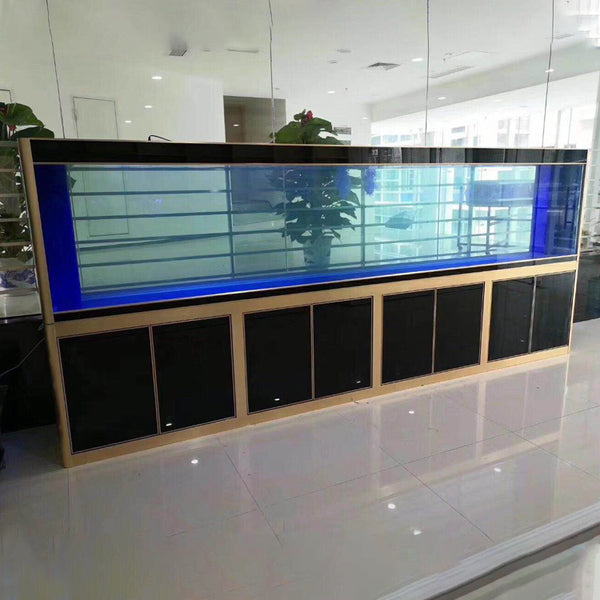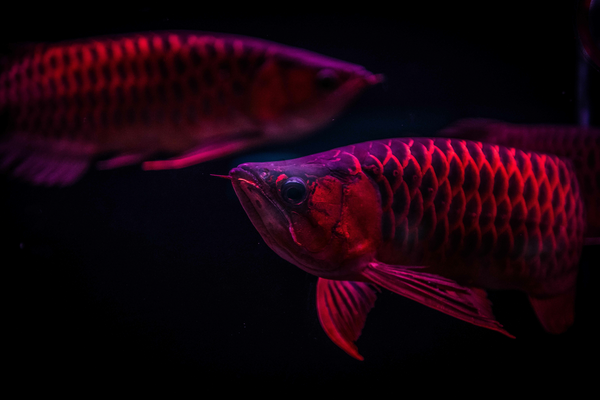
Arowana fish are among the most sought-after species, with rare ones selling for up to $300,000! They are believed to bring good luck and prosperity due to their metallic scales resembling coins. The Asian Arowana variety, being endangered, is illegal to import without proper licensing, making them even more exclusive and costly. Acquiring one of these fish is a remarkable feat, not to mention the sizable tank needed to accommodate them.

Silver Arowana are the most common Arowana in the USA, with various types ranging from gold to black. Arowana care is challenging and not suitable for everyone, given their price and maintenance level. Often called "monkey fish" due to their jumping ability, these fish can cost anywhere from $100 to $500 for an average Arowana, but prices can soar into six figures for rarer specimens.
To comfortably house a 36-inch Silver Arowana, a tank of at least 8x4x3 feet (approximately 700 gallons) is required. This size provides ample space to prevent injury from sudden movements or lights. Arowana are large, active fish that love to jump, and any serious hobbyist will prioritize providing extra space for their valuable fish to stay healthy. While a pond is sometimes recommended, professional installation can still cost upwards of 8k.

Our price for a 9x4x3 feet, 700-gallon tank depends on various options, but it typically costs around 14k. Including a sump, stand, and shipping, the full setup cost comes to nearly 19k. Though some recommend 250-gallon tanks, this size is insufficient for a fully grown Arowana. A 1000-gallon tank, measuring 3x the fish's length and 1.3x their width, is an ideal spacious setup.
For smaller 18-24 inch Asian Arowana, a 7x3x3 feet (around 400 gallons) tank is suitable. Such a tank costs around 7k, with the full setup nearing 10k.

Caring for a fully grown Arowana is not for everyone, given the high costs and setup complexities. However, we at Factory Fish Tanks are here to help answer any questions regarding your build. With over a decade of experience building tanks, we have crafted numerous Arowana tanks and are confident we are the right fit for your project!
References:
-
Roberts, T.R. (1989). The freshwater fishes of Western Borneo (Kalimantan Barat, Indonesia). Memoirs of the California Academy of Sciences 14: 1-210.
- This source provides information about the freshwater fishes of Western Borneo, including the Arowana.
-
Ng, H.H., Tan, H.H. (1997). Freshwater fishes of Southeast Asia: potential for the aquarium fish trade and conservation issues. Aquarium Sciences and Conservation 1: 79-90.
- This source discusses freshwater fishes of Southeast Asia, their potential for the aquarium trade, and conservation issues, including the Arowana.
-
Lucas, M.C., Baras, E. (2001). Migration of Freshwater Fishes. Blackwell Science Ltd, Oxford.
- This book offers insights into the migration patterns of freshwater fishes, including Arowana, which may be helpful when considering their behavior and habitat requirements.
- Chan, Stephen T. H., and John S. Y. Lee. "The Asian Arowana (Scleropages formosus) Species Complex: A Taxonomic Dilemma?" The Raffles Bulletin of Zoology, vol. 53, no. 1, 2005, pp. 11-17.
- Lucas, Michael C. "Swimming Performance of Adult Golden Arowana, Scleropages formosus, in Relation to Salinity and Pollutants." Journal of Fish Biology, vol. 65, no. 3, 2004, pp. 684-694, DOI: 10.1111/j.0022-1112.2004.00473.x.

0 comments